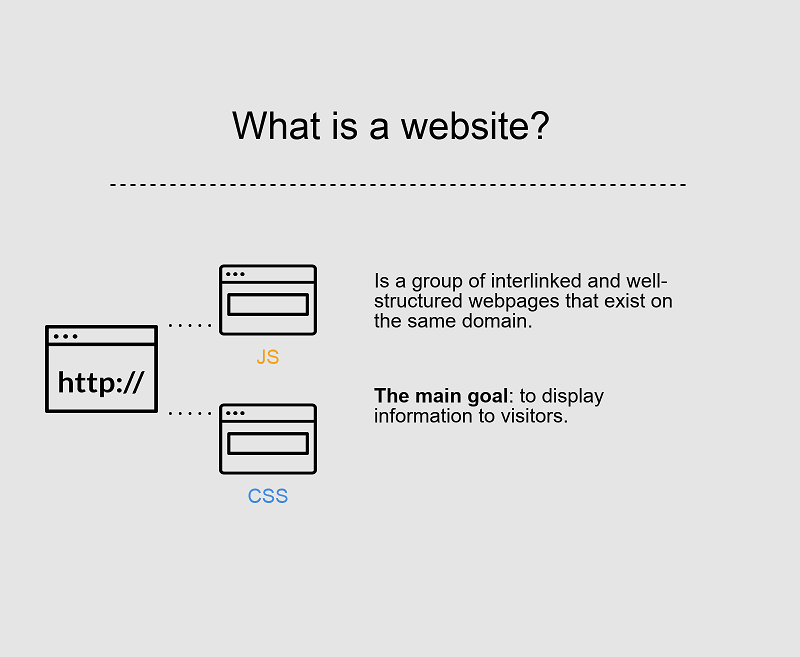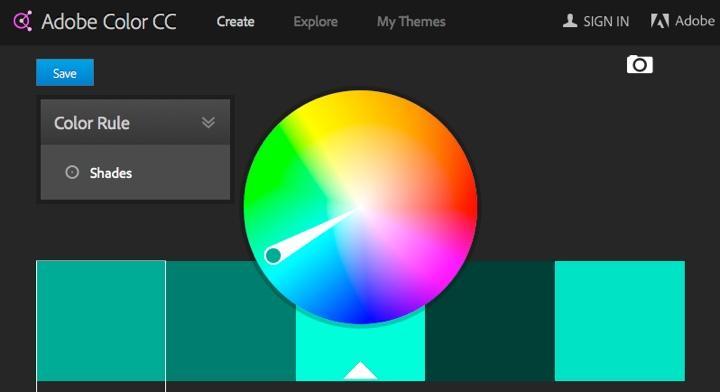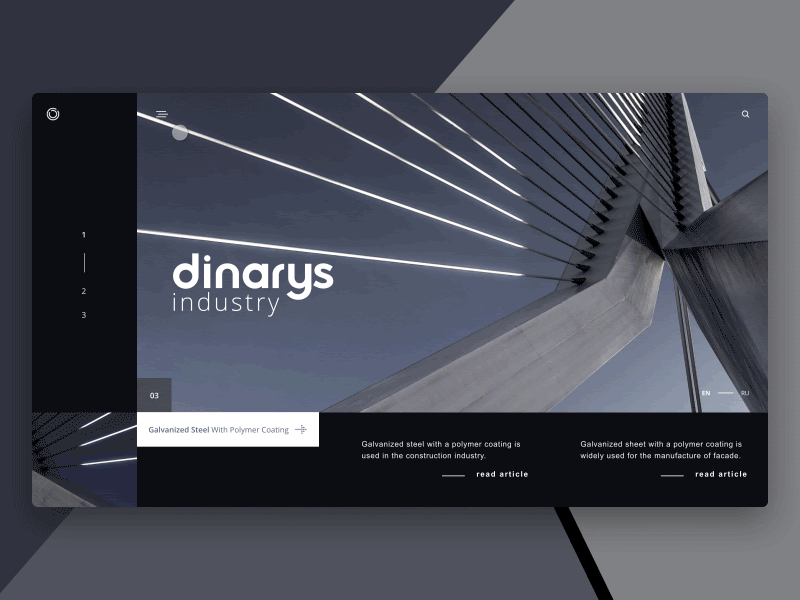Content
Website vs. Web Application: What's the Difference

An eCommerce business may face a common dilemma: create a web app or website for further online sales. At the same time, the eCommerce sphere is rapidly growing. Statista reports that, in 2022, retail eCommerce sales in the US are expected to reach over $638 million dollars.

For most people, there is no difference between a web app and a website; however, online retailers and eCommerce agencies know the difference, which requires a team with a different skill set.
Let’s talk more about:
- Websites
- Web apps
- Their advantages and what you should choose for your eCommerce business.
Lets talk about itHave a project in mind?
You may also like to read: 7 Key Advantages of CRM for eCommerce
Web applications vs websites
As a matter of fact, there is no difference between a webpage and a website for end-users. They simply type the URL address and don’t have to think about it, from there. The key is that the “website” should do what it is supposed to do.
At the same time, for an eCommerce development team, there is a big difference between creating a website or a web application. Keep this in mind when you decide between websites versus web applications for your online business. To make the right decision for your company, you should consider the following information in the article, below.

Websites: main features
Typically, websites are informational in nature. Great examples are blogs and sites that contain the news. The main purpose is to provide users with information.

Here is an example of a landing page, developed by the Dinarys team.
In most cases, users have zero or limited interaction with web pages. By “limited”, we mean subscribe forms or search boxes. So, should you use this solution for your eCommerce business model?
If you want to place only a small amount of information about your business (including description, upcoming events and contact information), you would choose a website for your needs.
Also read: How to Build a Successful Retail Website for Your Business

Web Applications: main features
Unlike sites, web applications are more responsive to visitors’ actions. Web apps are still informative, but your visitors can interact with the information you provide, in some way. Moreover, they can manipulate data and request different information.
Lets talk about itHave a project in mind?
As a specific application example, let’s take a closer look at your online banking app. Here, you can see information and even make some actions and transactions, with some simple input.

Useful apps make your life easier. For instance, with Adobe Color CC.

Web apps vs websites: key differences
To be more precise, we’d like to tell you about the basic differences between web-page and web app features.
Interactivity
The first variance is the different degree of interaction available. While a site contains text and visual content, users cannot interact with it, necessarily, and apps give users the possibility of not only reading but also manipulating information on the page. This is a kind of a dialog between the user and the business. The user interacts with the site interface and gets a response in the form of electronic payments, online chats, document downloads, and more.
An online shop, that allows users to buy items and search through the catalog, can be a web app. Another impressive example is social networks. They often include blog platforms, chats, customized content and unlimited content sharing.
Also read: Top 9 Essential Features for Custom E-Commerce Websites
Today, most websites have a hint of interactivity, because users appreciate and respond to that feature. For this reason, some website owners prefer to add small web app elements to their websites.
Some restaurants place Google Maps widgets on their contact page so that users can find a direct route to their restaurant. At the same time, most websites contain informational content, rather than interactivity. That way, website visitors spend more time listening, reading or viewing the page. Unlike websites, web app visitors are mostly focused on interaction.
Integration
The action of bringing different components together to build more comprehensive systems is called integration. Developers can integrate web applications and sites with other software, including ERP, CRM, etc. In most cases, most people do an integration with apps. Why? Because of their complex features that may require additional information from extra systems. One of the most popular integrations in eCommerce is the integration of an app with Customer Relationship Management (CRM) systems. This helps online retailers store customers’ personal data, order information, and improves the work of the sales team. With the integration, all application user data is automatically collected and stored in CRM systems. Such integration also enables your online shop team to explore customer behavior, buying habits, and be more effective in dealing with negative reviews. This is extremely beneficial for online shop owners since all changes in customer data will be automatically reflected in the CRM. This method of engagement with customer data will bring an increase in sales and overall improvement of an online shop’s management processes.
In some cases, website owners perform integration with CRM to provide visitors with more personalized content. Unlike web apps, such integration with websites is an optional feature, rather than part of the main functionality.
Authentication
This process includes entering user data to gain access to the site or the system.
This feature is vital for systems that require any personal information. At this stage, however, it is important to pay special attention to security, which is necessary to prevent unauthorized access and theft of users’ personal data.
Also read: 5 Tips for Magnificent eCommerce Website Design
Unlike sites, applications more often require authentication. Why? Because they provide users with a broader scope of options than a website. For instance, when using social networks, the system warns you about weak logins and passwords. This may result in stealing your information from hackers.
Most informative sites use authentication and, in some cases, it is used to give users more options that are not provided to unregistered users. If unregistered users can only view articles, registered users can leave comments, share via social networks, etc. This is also a great way to block spammers.
In this way, authentication is required for both web apps and sites.
Lets talk about itHave a project in mind?
A Successful Combination
When creating an information portal or developing an online shop, you should not always choose a website versus web app. When looking at WordPress, initially, these sites were aimed at displaying information to visitors, which is why we call pages on these platforms ‘websites.’ At the same time, its back-end has a content management system that is highly flexible and extensible, which also gives WordPress some web app features.
This helps show how most sites are starting to combine web applications with website features.

What is the difference between the webpage and the website? Look at an example of a web-site with web app features, developed by Dinarys.
Also read: Magento vs Shopify: ECommerce Platforms Comparison
Development teams
The decision between a web app and website depends on your business needs. If your online retail business model requires a site, you can hire a small outsourcing eCommerce agency. Such companies usually develop good websites with custom design, where you can keep all the relevant information about your business. On the other hand, if you decided to add some web app components to the site, you need to find a team that is experienced specifically in web app development.
With web applications, you need to find a web app development team with some sample applications in their portfolio. That is the main web page and website difference in terms of development.
Conclusion
When you need to choose between a web app and website for your eCommerce business, it is hard to determine which is better, at first glance. Websites and apps run in a browser, require an internet connection, and have back-end and front-end developed in the same programming languages. Moreover, on sites, apps might include such features as integration, interactivity, and authentication.
The Dinarys team wants to emphasize that the difference between web apps and sites is real. It is necessary to understand this difference when you are in search of an online solution for your business model. You should also remember that the process of app development is much more difficult than a standard site creation, which is why you need a more experienced team for app development. Remember that most online retailers hire Dinarys for their development of online shops on eCommerce platforms, so you can consider this a strong option. We hope that this article sets the record straight and you have a clear idea when it comes to what type of solution you need and what team to hire for the development process.
How can the Dinarys team help your eCommerce business?
The Dinarys team of developers and designers is a full-cycle eCommerce development company. The team can develop a site from scratch or create a custom web application to improve your site functionality and increase sales.
The team provides such services as:
- Business analysis for your industry
- Development of profiles of your target customers
- Creation of UI/UX design based on current trends
- Website development
- Creation of online shops on CMS ( we are mostly focused on Magento, Shopify, WooCommerce, PrestaShop)
- Creation of mobile apps for iOS and Android for your business
If you are interested in these services or would like an additional consultation concerning your future eCommerce solution, fill in this form and the team will contact you ASAP!
Let professionals meet your challenge
Our certified specialists will find the most optimal solution for your business.

